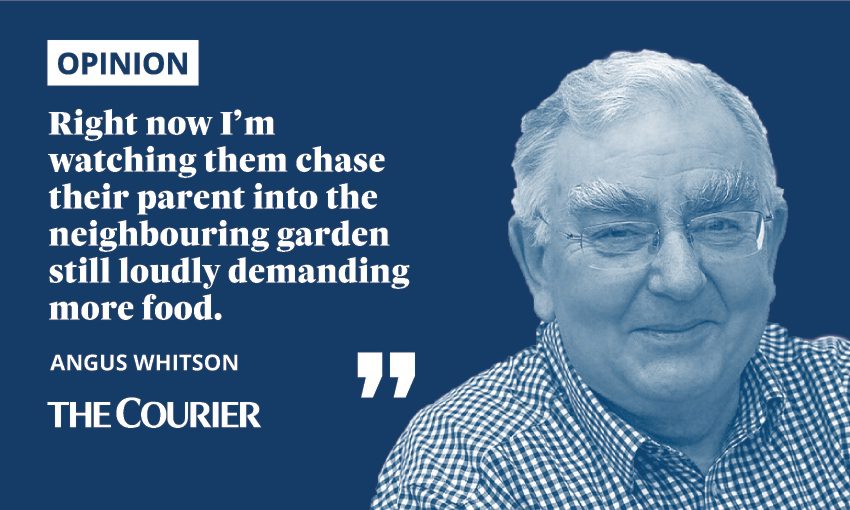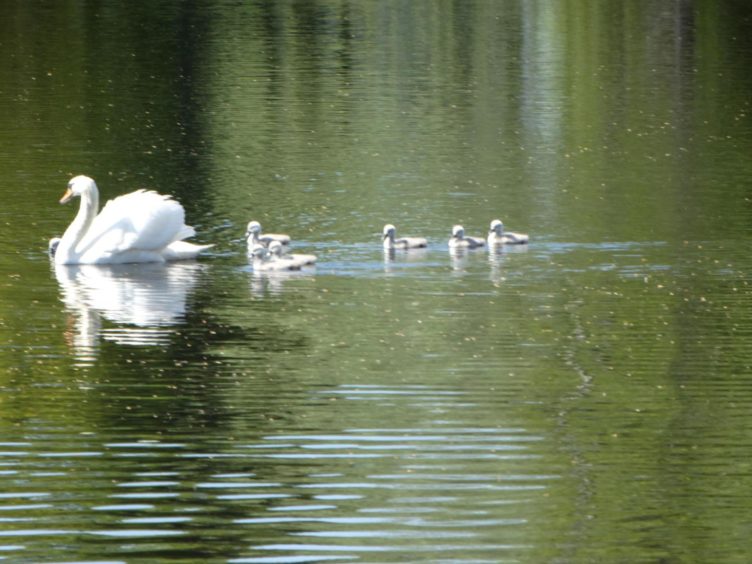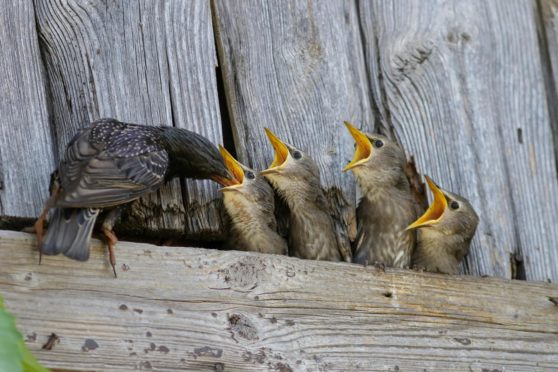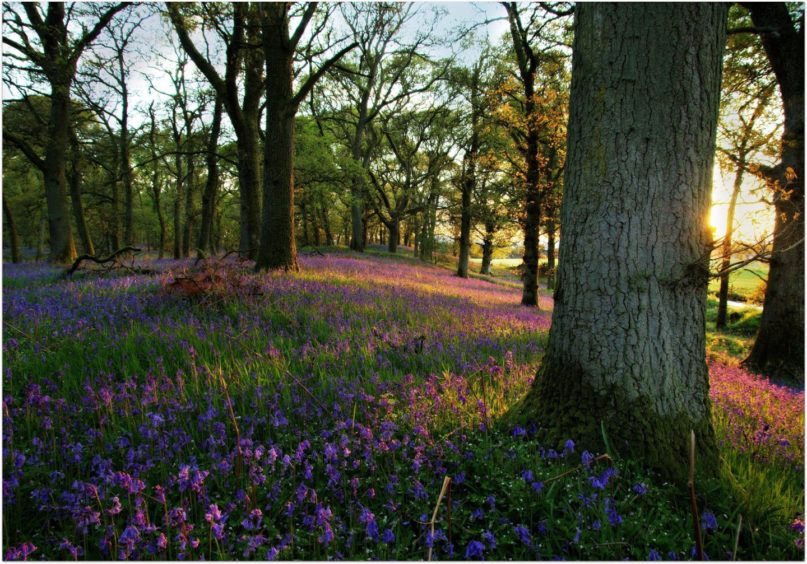I should resist the temptation to gaze out of the window seeking inspiration for what to write because, more often than not, my attention is distracted by the birds visiting the feeders.
Right now I’m watching a starling parent feeding two chicks. The parent bird rushes all over the grass pecking for insects and small earthworms pursued by the chicks and their incessant, noisy demands.
The moment it has a beakful the chicks crowd round flapping their wings to stimulate the parent to feed them, their beaks gaping wide open to display their pink throat.
This is another stimulus and provides the parent with a target to aim for when stuffing in the creepy crawlies.

The parent makes no attempt to share out the food, feeding the most demanding begging mouth.
I suppose it all levels out and both chicks get a more or less equal share of the food.
Both chicks can fly so they will soon be fully independent and able to forage for themselves. But right now I’m watching them chase their parent into the neighbouring garden still loudly demanding more food.
Photographer’s frustration
How I wish wild birds and animals would pose for family photographs like us humans – small ones in front and the big ones at the back.
I took Inka round Fasque Lake as I’d had word that the mute swans had hatched their eggs and the cygnets were out on the water.
The cygnets leave the nest just a couple of days after hatching and at this stage are seven small, downy-grey powder puffs scooting around after their parents.

If I got both adults together several of the cygnets were off elsewhere exploring, and if all the cygnets were together one of the parent birds was at the other side of the lake.
But you’ll see from my picture this week what a bonny family they are.
No place for pity
Nature isn’t always cuddly. Walking through the rookery wood across from the house several young rooks were lying dead at the foot of the high beech trees.
It happens every year. They fly after about 30 days from hatching but as they get closer to independence they get bolder, leaving the nest and edging out along the branches, flapping their wings to strengthen them for flight.
Sometimes a young bird gets overambitious, loses its footing and falls to the ground. Its calls to the parents are ignored and it will be left to starve. It’s nature’s way – no time for pity or regrets.
I never had the wit to ask him how … but it’s one of these Boys Own stories that I now question if it really happened
My father told me that when he was at boarding school – this would have been about 1916 – he found a young jackdaw newly fallen from the nest.
He took it back to school and kept it in the bike shed. He managed to rear it and it would fly to him when he whistled for it.
I never had the wit to ask him how he reared it or how long it was before it went back to the wild, but it’s one of these Boys Own stories that I now question if it really happened.
Bluebells of Scotland
In a recent programme of Landward, presenter Dougie Vipond mentioned our Scottish bluebells which are in full bloom at this time.
What, in fact, he was referring to were wild hyacinths – what Mary McMurtrie in her seminal book, Scottish Wild Flowers, calls English bluebells; not to be confused with the non-native introduced Spanish bluebell, an altogether bigger and invasive plant which tends to crowd out our more delicate native species when they grow together.
Early on in my career as Man with Two Dogs I committed Dougie’s self-same solecism and I was taken to task by Mr Gordon Dilworth of Moulin, near Pitlochry, who was a regular contributor to the letters page of this newspaper.
He pointed out – quite pointedly – that the harebell is the true Scottish bluebell. And he is corroborated by Mary McMurtrie.
It’s early yet for harebells which flower from July to September. They are an altogether much more delicate flower than the wild hyacinth and, some say, is the truly representative flower of Scotland.
The proud and regal thistle is, of course, our national emblem, the embodiment of our nationhood – what it is to be Scottish. But there’s another side to us – what it feels to be Scottish – the imaginative and sensitive side to our Scottishness.
Wha’s like us? The harebell in its own way
Sir Harry Lauder sang tenderly in praise of Mary, his Scots bluebell, and you might think that the words of such an authority would end the matter.
But the waters get muddied when you buy a box of Scottish Bluebell matches (made in Sweden, please note) which has a spray of harebells decorating the lid.
The pre-Raphaelite poet, Christina Rosetti, wrote – Hope is like a harebell, trembling from its birth.
I prefer Mary McMurtrie’s description of the harebells’ delicate blue bells hanging on threadlike stalks from a wiry stem – a metaphor, surely, for our natural resilience, combined with delicacy and grace.

